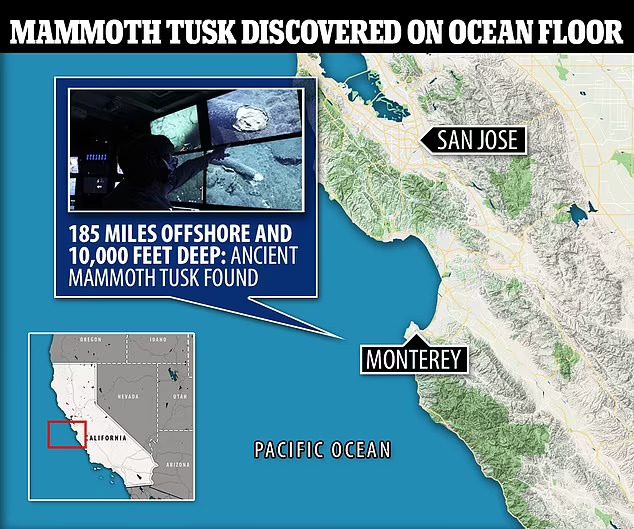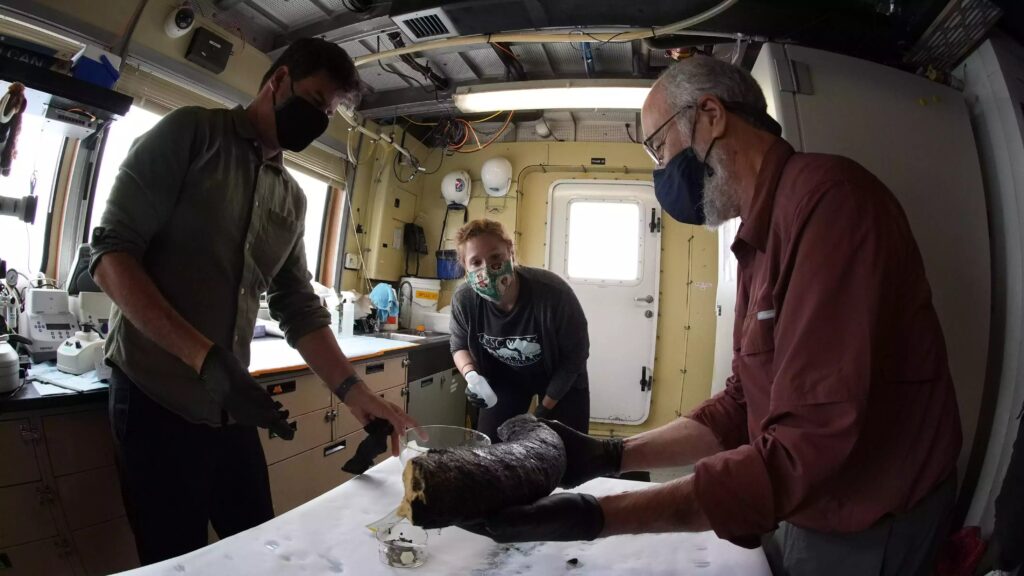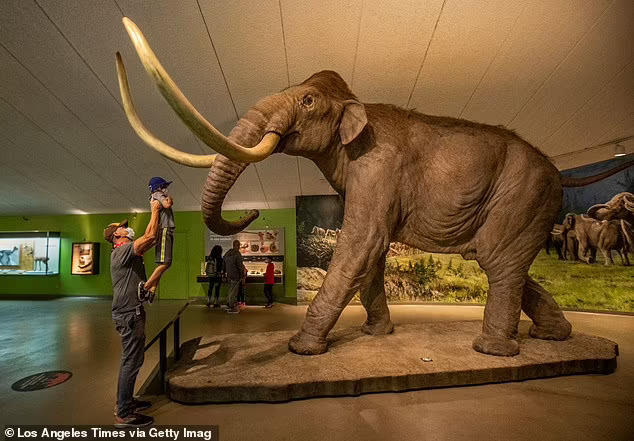A 3-foot-long mammoth tusk hidden on the ocean floor could offer clues about the ancient creatures
Scientists have confirmed that an ‘ancient’ tusk recovered 10,000 feet below the ocean surface does belong to a young mammoth. A team of researchers from UC Santa Cruz, Monterey Bay Aquarium Research Institute, and the University of Michigan were traversing the seafloor about 185 miles off the California coast, near Monterey in 2019, when they spotted what looked like an elephant’s tusk and picked up a small fragment.

They returned in July 2021 to get the entire specimen and after further examination, they have determined the three-foot-long tusk, ‘uniquely’ preserved by the cold, high-pressure environment of the deep sea, belongs to a Columbian mammoth.
At this time, it’s unclear how old the tusk is, but Dr Terrence Blackburn, a researcher at UC Santa Cruz, told the New York Times it could be more than 100,000 years old. Blackburn’s lab is analyzing the tusk using CT scans, a method that will not only reveal the animal’s age but the full three-dimensional internal structure of the tusk and other information as well.

‘Specimens like this present a rare opportunity to paint a picture both of an animal that used to be alive and of the environment in which it lived,’ UC Santa Cruz professor Beth Shapiro said in a statement.
‘Mammoth remains from continental North America are particularly rare, and so we expect that DNA from this tusk will go far to refine what we know about mammoths in this part of the world.’
It’s likely that the tusk belonged to a young female mammoth, the Times reported, as Katherine Moon, a postdoctoral researcher in Shapiro’s lab, took DNA evidence from the tip that was first discovered in 2019.
At this point, researchers are unsure how the tusk made its way to the bottom of the ocean floor, even though the animal died on land. The tusk was initially retrieved by a remotely operated vehicle (ROV) named Doc Ricketts.
When the researchers went back to the tusk in July, they attached household sponges and plastic fingers to the end of the ROV’s arms to make it easier to pick up.
They also took photos and videos to create a 3-D model in case it broke during recovery.
‘You start to ‘expect the unexpected when exploring the deep sea, but I’m still stunned that we came upon the ancient tusk of a mammoth,’ senior scientist Steven Haddock said in the statement.
‘We are grateful to have a multidisciplinary team analyzing this remarkable specimen, including a geochronologist, oceanographers, and paleogenomicists from UCSC and palaeontologists at the University of Michigan.
‘Our work examining this exciting discovery is just beginning and we look forward to sharing more information in the future.’

Mammoth tusks over 100,000 years old are ‘extremely rare,’ Dick Mol, a palaeontologist with the Historyland museum, told the Times. However, the tusk was covered in a thick layer of iron-manganese crust, which is abundant in the deep sea and likely suggests it has been there for at least a few thousand years.
Approximately 200,00 years ago, the Earth went through a glacial period, with mankind’s ancestors migrating from Africa. It’s possible the mammoths also migrated out of Africa, but it’s unclear how they arrived.
‘We don’t really know much of anything about what was happening during that time period,’ University of Michigan palaeontologist Daniel Fisher told the Times.
‘We don’t have access to a lot of specimens from this time period and that’s due in large part to the fact that getting access to sediments of this age is difficult.’
‘This specimen’s deep-sea preservational environment is different from almost anything we have seen elsewhere,’ added Fisher, who specializes in the study of mammoths and mastodons, in the statement.
‘Other mammoths have been retrieved from oceans, but generally not from depths of more than a few tens of meters.’
READ ALSO: HUMANS DID NOT CAUSE WOOLLY MAMMOTHS TO GO EXTINCT, CLIMATE CHANGE DID
Nonetheless, the researchers are excited by the discovery and the possibilities it brings as it pertains to learning more about the age of the animal and how it lived.
‘We’re all incredibly excited,’ Moon told the Times. ‘This is an Indiana Jones mixed with Jurassic Park moment.’

Lesser known than their famous ancestors, the woolly mammoths, Columbian mammoths were created after woolly mammoths bred with Krestovka mammoths in North America. It’s unclear when they first appeared on Earth, but a study published in February suggested the ‘hybridization … took place approximately 420,000 years ago.’
Around one million years ago there were no woolly or Columbian mammoths, as they had not yet evolved. Roughly half of the Columbian mammoth’s genome came from the Krestovka mammoth and the other half from the woolly mammoth.





